
Sir George Gilbert Scott, largely known as Sir Gilbert Scott, was a prolific English Gothic Revival architect, chiefly associated with the design, building and renovation of churches and cathedrals, although he started his career as a leading designer of workhouses. Over 800 buildings were designed or altered by him.
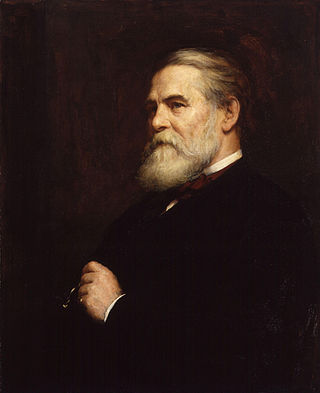
John Loughborough Pearson was a British Gothic Revival architect renowned for his work on churches and cathedrals. Pearson revived and practised largely the art of vaulting, and acquired in it a proficiency unrivalled in his generation. He worked on at least 210 ecclesiastical buildings in England alone in a career spanning 54 years.

The Metropolitan Borough of Chelsea was a metropolitan borough of the County of London between 1900 and 1965. It was created by the London Government Act 1899 from most of the ancient parish of Chelsea. Following the London Government Act 1963, it was amalgamated with the Royal Borough of Kensington in 1965 to form the Royal Borough of Kensington and Chelsea.
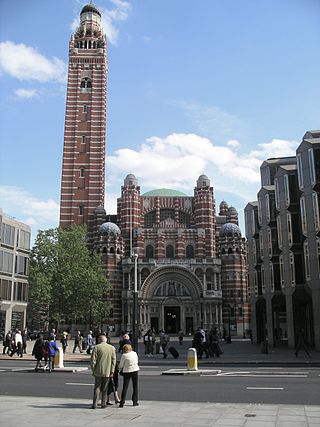
The Metropolitan Cathedral of the Most Precious Blood, known as Westminster Cathedral, is the largest Roman Catholic church in England and Wales and the seat of the Cardinal Archbishop of Westminster.
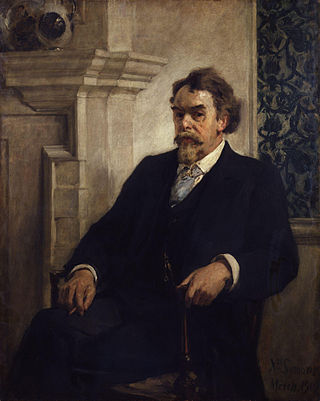
John Francis Bentley was an English ecclesiastical architect whose most famous work is the Westminster Cathedral in London, England, built in a style heavily influenced by Byzantine architecture.

The Archdiocese of Southwark is a Latin Church archdiocese of the Catholic Church in England. It is led by the Archbishop of Southwark. The archdiocese is part of the Metropolitan Province of Southwark, which covers the South of England. The Southwark archdiocese also makes up part of the Catholic Association Pilgrimage.

The London Oratory, officially the Congregation of the Oratory of St Philip Neri in London, is a Catholic community of priests living under the rule of life established by Philip Neri (1515-1595). It is located in an Oratory House, next to the Church of the Immaculate Heart of Mary in the Brompton Road, Royal Borough of Kensington and Chelsea, London, SW7.
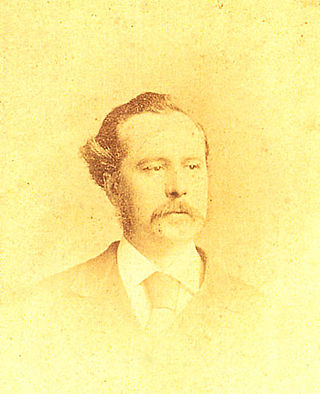
Edward Welby Pugin was an English architect, the eldest son of architect Augustus Welby Northmore Pugin and Louisa Barton and part of the Pugin & Pugin family of church architects. His father was an architect and designer of Neo-Gothic architecture, and after his death in 1852 Edward took up his practice. At the time of his own early death in 1875, Pugin had designed and completed more than one hundred Catholic churches.
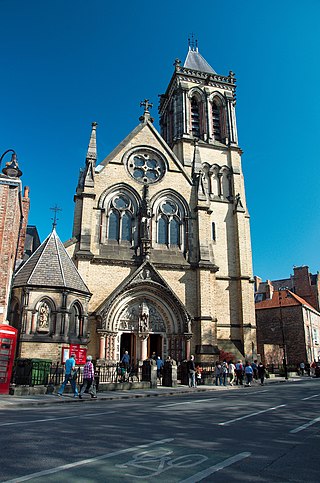
George Goldie was an English ecclesiastical architect who specialised in Roman Catholic churches.
David John Cashman (1912–1971) was an English prelate of the Roman Catholic Church. He served as Bishop of Arundel and Brighton from 1965 to 1971.

Our Lady of Victories, in Kensington, London, is a Roman Catholic church. The original church opened in 1869, and for 34 years to 1903 served as pro-cathedral of the Archdiocese of Westminster. That building was destroyed by bombing in 1940: its successor, which survives, opened in 1959. The church stands at 235a Kensington High Street, Kensington, in the Royal Borough of Kensington and Chelsea.

St Mary Magdalen Roman Catholic Church, Mortlake, is a Roman Catholic church in North Worple Way, Mortlake, in the London Borough of Richmond upon Thames. The church is dedicated to Jesus' companion Mary Magdalene. It is located just south of Mortlake High Street and the Anglican St Mary the Virgin Church. St Mary Magdalen's Catholic Primary School is just north of the churchyard.

The Church of Our Lady of the Assumption and St Gregory is a Catholic church on Warwick Street, Westminster. It is the oldest Catholic church in England. It was formerly known as the Royal Bavarian Chapel, because like several Catholic churches in London it originated as a chapel within a foreign embassy. It was built between 1789 and 1790 to the designs of Joseph Bonomi the Elder. The only surviving eighteenth-century Catholic chapel in London, it is a Grade II* listed building. The parish is now operated by the Personal Ordinariate of Our Lady of Walsingham, the British personal ordinariate for the Anglican Use within the Catholic Church.

St John the Baptist Church is a Roman Catholic Parish church in Rochdale, Greater Manchester, England. It was founded in 1830, and built in 1927. It is situated on the corner of Maclure Road and Dowling Street, opposite the Greater Manchester Fire Service Museum in the centre of the town. It was built in the Byzantine Revival style and is a Grade II* listed building.

St Mary of the Angels is a Roman Catholic church on Moorhouse Road in Bayswater, London, England, within the City of Westminster. The parish it serves is partly in the City of Westminster and partly in the Royal Borough of Kensington and Chelsea.

The Roman Catholic Church of Saint Charles Borromeo is a Roman Catholic church on Ogle Street in the Diocese of Westminster, London.

St Mary's Church is a Roman Catholic Parish church in the Preston Village area of Brighton and Hove, East Sussex, England. It was built from 1910 to 1912 in the Arts and Crafts style of Gothic Revival architecture. It is situated on the Surrenden Road on the corner with Preston Drove opposite Preston Park. It was designed by Percy Aiden Lamb, a student of Edward Goldie, and is a Grade II listed building.

St Mary and St Modwen Church is a Roman Catholic parish church in Burton upon Trent, Staffordshire, England. It was built from 1878 to 1879, to designs by John Edgar Young in the Gothic Revival style. It is located on Guild Street in the town centre. It is a Grade II listed building.




















